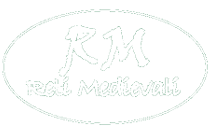Cortese, Maria Elena (2022) Sui sentieri del sale. Proprietà, risorse e circuiti economici tra Comacchio e Ravenna (secoli IX-X). Reti Medievali Rivista, 23 (1). pp. 81-119. ISSN 1593-2214
Anteprima |
Testo
9080-Articolo-33490-4-10-20220628.pdf - Versione pubblicata Download (905kB) | Anteprima |
Abstract
ITALIANO: L’articolo tratta delle strutture economiche, politiche e sociali dell’area tra Ravenna e Comacchio a partire dallo sfruttamento delle aree umide costiere, in primo luogo per la coltivazione e distribuzione del sale (non solo a livello locale ma anche verso l’area interna del regno italico). Viene ricostruito il ruolo degli arcivescovi, eredi principali, ma non esclusivi, del complesso di beni e diritti di pertinenza dell’antico Esarcato, nonché principali attori della ridistribuzione di tali risorse, affiancati dai soggetti laici ed ecclesiastici più eminenti sulla scena ravennate. Ampio spazio viene dato al peso politico ed economico dei beni fiscali, largamente presenti nell’area, che conservarono una persistente etichetta pubblica e restarono costantemente al centro della competizione politica passando frequentemente di mano. / ENGLISH: The article deals with the economic, political, and social structures of the area between Ravenna and Comacchio, starting from the exploitation of the coastal wetlands, first of all for the production and distribution of salt (not only locally but also towards the internal area of the Kingdom of Italy). The role of the archbishops is reconstructed. They were the main, but not exclusive, heirs of the complex of assets and rights pertaining to the ancient Exarchate, and the main actors in the redistribution of these resources, flanked by the most eminent lay and ecclesiastical subjects on the Ravenna scene. Ample space is given to the political and economic weight of the fiscal assets, widely present in the area, which preserved a persistent public label and remained constantly at the center of political competition, frequently changing hands.
| Tipologia del documento: | Articolo in rivista |
|---|---|
| Informazioni aggiuntive: | In: Saggi. |
| Parole chiave: | Medioevo, Secoli IX-X, Regno italico, Esarcato, Ravenna, Comacchio, Fiume Po, Impero, Ottoni, Arcivescovi, Aristocrazia, Monasteri, Mercanti, Sale, Beni fiscali, Economia, Commercio, Lagune, Peschiere, Middle Ages, 9th-11th Century, Kingdom of Italy, Exarchate, Po River, Empire, Ottonian Dinasty, Archbishops, Aristocracy, Monasteries, Merchants, Salt, Fiscal assets, Economy, Commerce, Lagoons, Fishponds |
| Soggetto: | D History General and Old World > D History (General) > D111 Medieval History |
| Depositato da: | dr Vincenzo De Luise |
| Depositato il: | 29 Gen 2024 13:18 |
| Ultima modifica: | 29 Gen 2024 13:19 |
| URI: | http://www.rmoa.unina.it/id/eprint/6920 |
Downloads
Downloads per month over past year
Actions (login required)
 |
Modifica documento |





